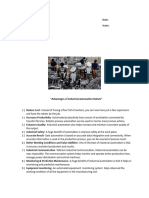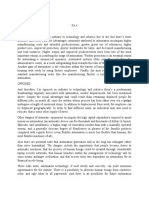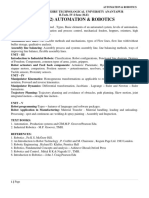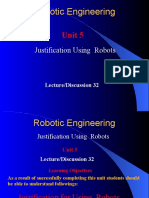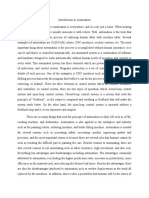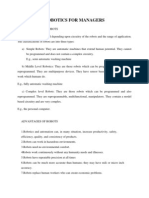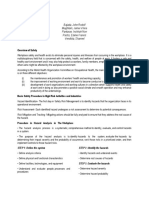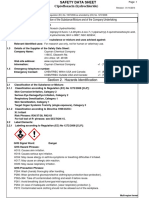0% found this document useful (0 votes)
2 views7 pagesROBOTS
The document discusses the advantages and disadvantages of automation and robotics in various industries, highlighting benefits such as increased productivity, improved safety, and cost savings. It also addresses the negative impacts, including worker displacement and dependency on technology, as well as potential risks associated with automation. Overall, while automation offers significant opportunities for efficiency and safety, it also poses challenges that need to be managed carefully.
Uploaded by
tan tienCopyright
© © All Rights Reserved
We take content rights seriously. If you suspect this is your content, claim it here.
Available Formats
Download as DOCX, PDF, TXT or read online on Scribd
0% found this document useful (0 votes)
2 views7 pagesROBOTS
The document discusses the advantages and disadvantages of automation and robotics in various industries, highlighting benefits such as increased productivity, improved safety, and cost savings. It also addresses the negative impacts, including worker displacement and dependency on technology, as well as potential risks associated with automation. Overall, while automation offers significant opportunities for efficiency and safety, it also poses challenges that need to be managed carefully.
Uploaded by
tan tienCopyright
© © All Rights Reserved
We take content rights seriously. If you suspect this is your content, claim it here.
Available Formats
Download as DOCX, PDF, TXT or read online on Scribd
/ 7











